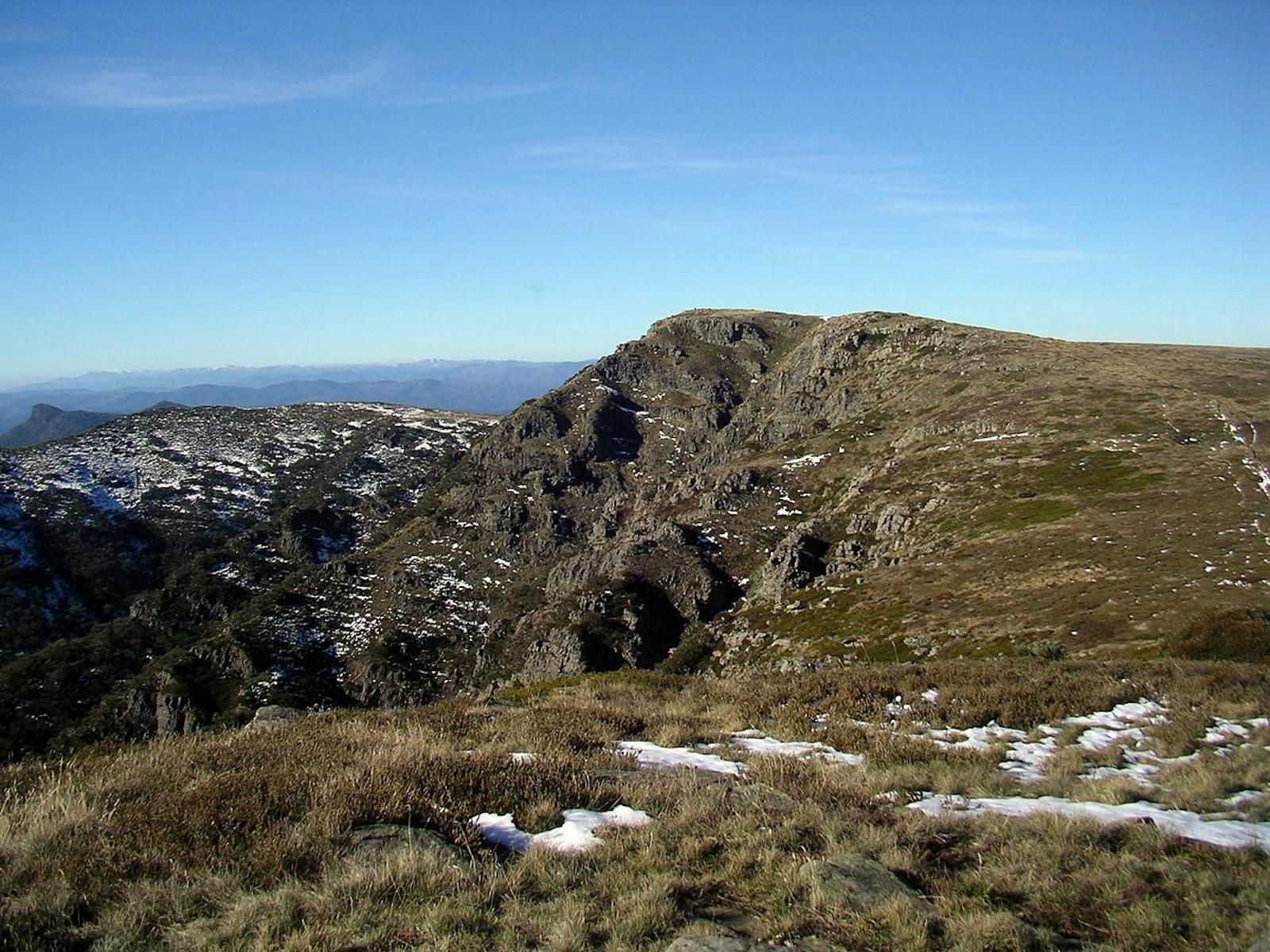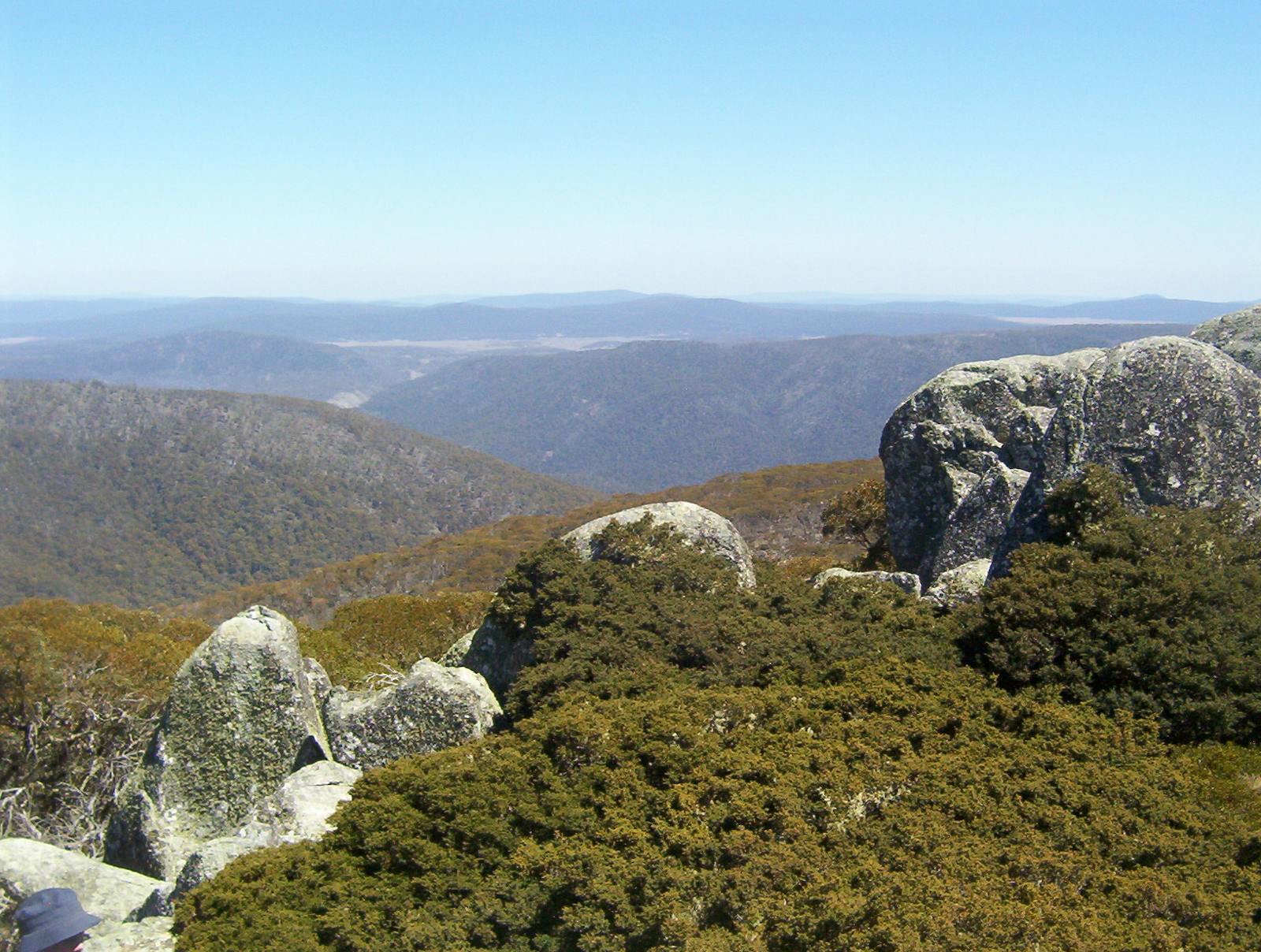Australian Alps Montane Grasslands
Australia
Bioregion: East Australian Temperate Forests & Mountain Shrublands (AU3)
Realm: Australasia
Ecoregion Size (1000 ha):
1,235
Ecoregion ID:
193
Conservation Target:
100%
Protection Level:
6
States:
The southern portion of the Great Dividing Range in southeast Australia has peaks reaching 2,228 m, making it the highest massif on the continent and the only ecoregion with alpine ecosystems. This cluster of taller peaks and ranges captures over 20% of the continent’s rainfall, creating wetter habitats and acting as an important catchment for downstream freshwater ecoregions.
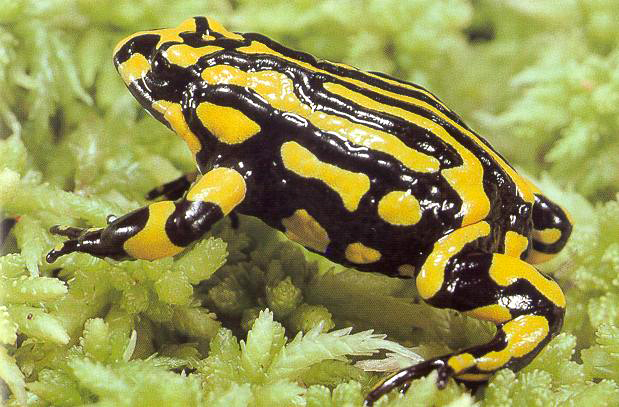
The flagship species of the Australian Alps Montane Grasslands ecoregion is the corroboree frog. Image credit: Australian Alps, Flickr
Above the treeline on the highest peaks (roughly 1,600 to 1,800 m) are heathlands, sod tussock grasslands, short and tall alpine herbfields, and bogs. At lower elevations there is a transition zone of snow gums—white sallee (E. pauciflora) and black sallee (E. stellulatea)—with an understory of heath shrubs. In the alpine zone, tall herbfields grow on well-developed humus soils (the deep alpine soils derive from the great age of the range), with about 200 species from several families, such as Compositae, Cyperaceae, Gramineae, Juncaceae, Ranunculaceae, and Umbelliferae. Coprosma spp. and Colobanthus spp. grow in fjeldmark communities.
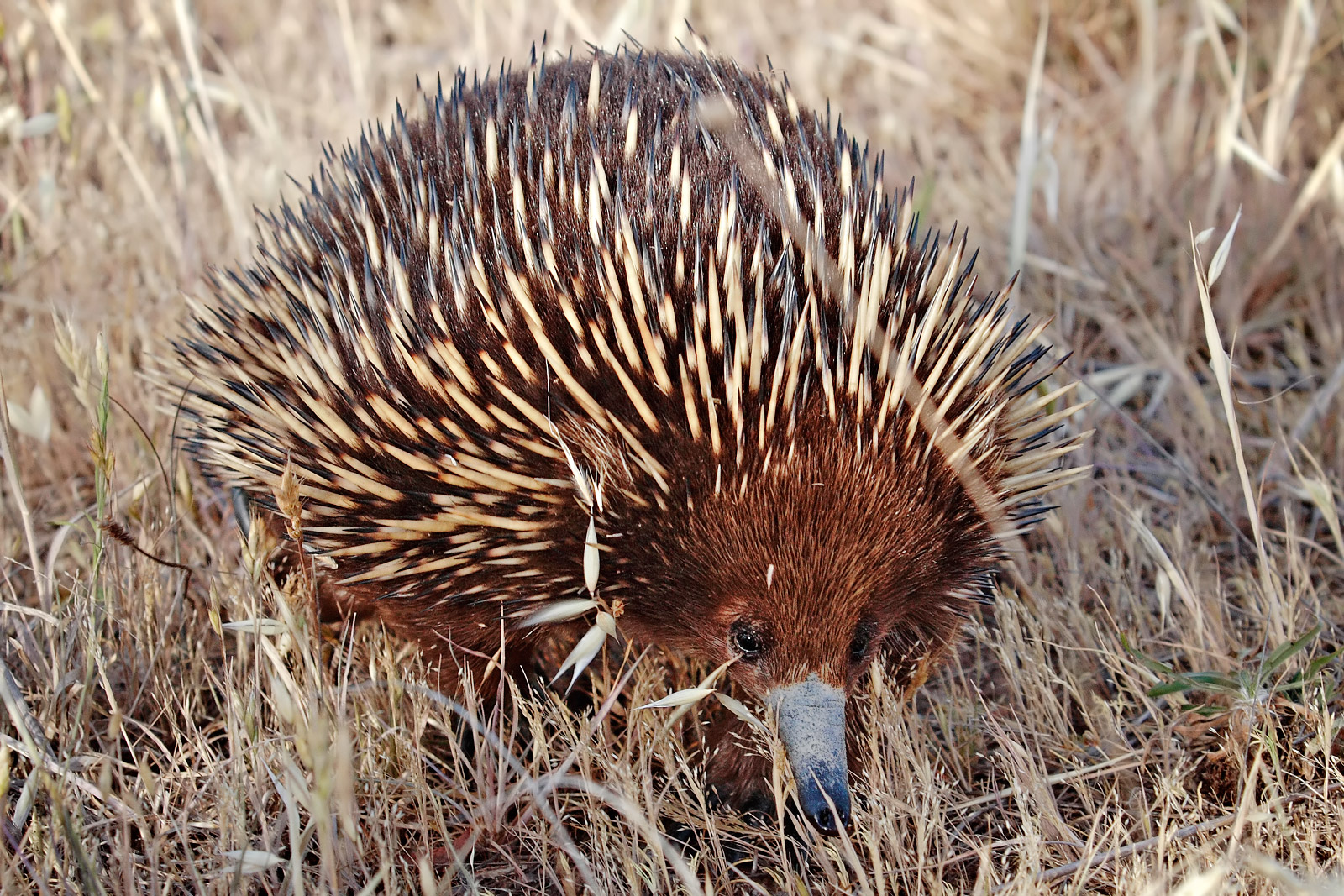
Wild shortbeak echidna. Image credit: Creative Commons
Proteaceae, Myrtaceae, Rutaceae, Compositae, Leguminosae, and Podocarpaceae are well-represented in the heath shrublands. The short stature, shrublike mountain plum-pine (Podocarpus lawrencei), with its bright pomegranate-colored fruits, is the only alpine conifer in mainland Australia. Twenty-six plant species occur only in the alpine and subalpine zones of the Alps. No plant genera are endemic. Alpine plants are adapted to the cold climate, lengthy snow cover, and winter drought with small and waxy leaves, often dense and low profiles, flowering under snow in some species, rapid flowering and seeding, and spreading commonly through budding.
The mountain pygmy possum (Burramys parvus ) lives only in the alpine and subalpine zones. This unusual marsupial hibernates under the snow. The native bush rat, broad- toothed rat , and Swainson’s antechinus also occur in the alpine zone. The pipit (Anthus novaeseelandiae), nankeen kestrel (Falco cenchroides), and the Australian magpie (Gymnorhina tibicen) are found in the alpine zone during summer, retreating to lower elevations in autumn.
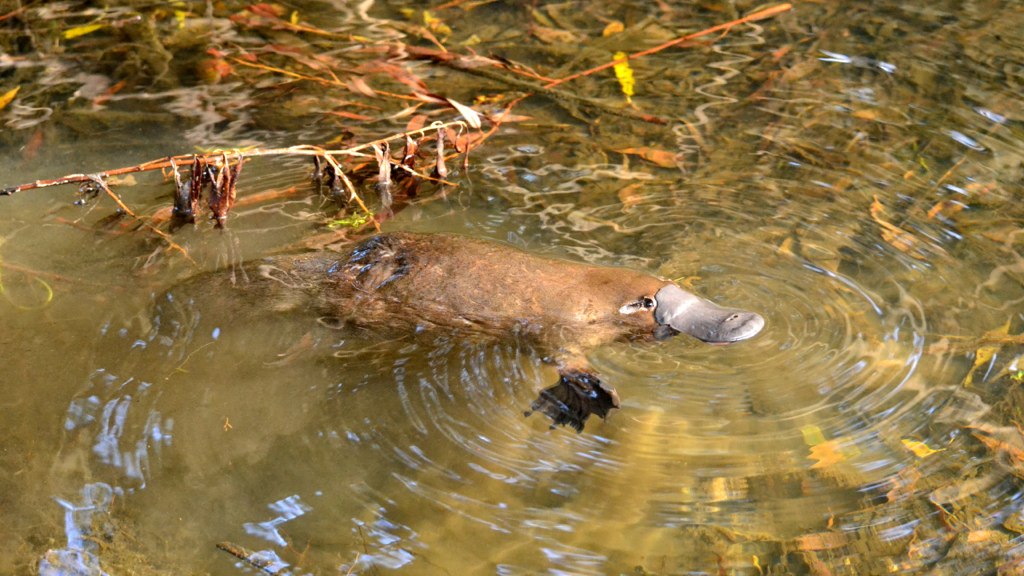
Wild platypus. Image credit: Creative Commons
Gang-gang cockatoo (Callocephalon fimbriatum) may occur in snow gums even in winter. Few reptiles occur in the colder heights, though the alpine water skink (Sphenomorhus koscuiskoi) can occur over 1,000 m in the southern zone. The extraordinary black and yellow corroboree frog (Pseudophryne corroboree) crawls through sphagnum bogs along with the baw baw frog. Alpine-adapted invertebrates are often unique to the alpine environment. Examples are the mountain spotted grasshopper and alpine thermocolor grasshopper, wingless cockroach, and the alpine silver Xenica butterfly.
The trampling of hard-hooved feral horses and deer damages fragile alpine vegetation. Too many tourists in some areas have damaged the vegetation, as well. Feral animals muddy and cloud some of the vulnerable freshwater bogs and streams of the alpine and subalpine zone. Global heating is causing temperatures to rise causing stress to cold-adapted species and shifts upwards in distribution, to a point where some species may disappear in the near future.

Bennett's Wallaby. Image credit: Creative Commons
The Australian Alps were first protected in the late 1800s due to its watershed value. The majority of the Australian Alps Montane Grasslands ecoregion is state land with protected areas covering 16,000 km2. National parks include the ACT’s Namadgi National Park, New South Wales’s Kosciuszko and Brindabella National Parks and Bimberi and Scabby Range Nature Reserves, and Victoria’s Alpine and Snowy River National Parks and Avon Wilderness.
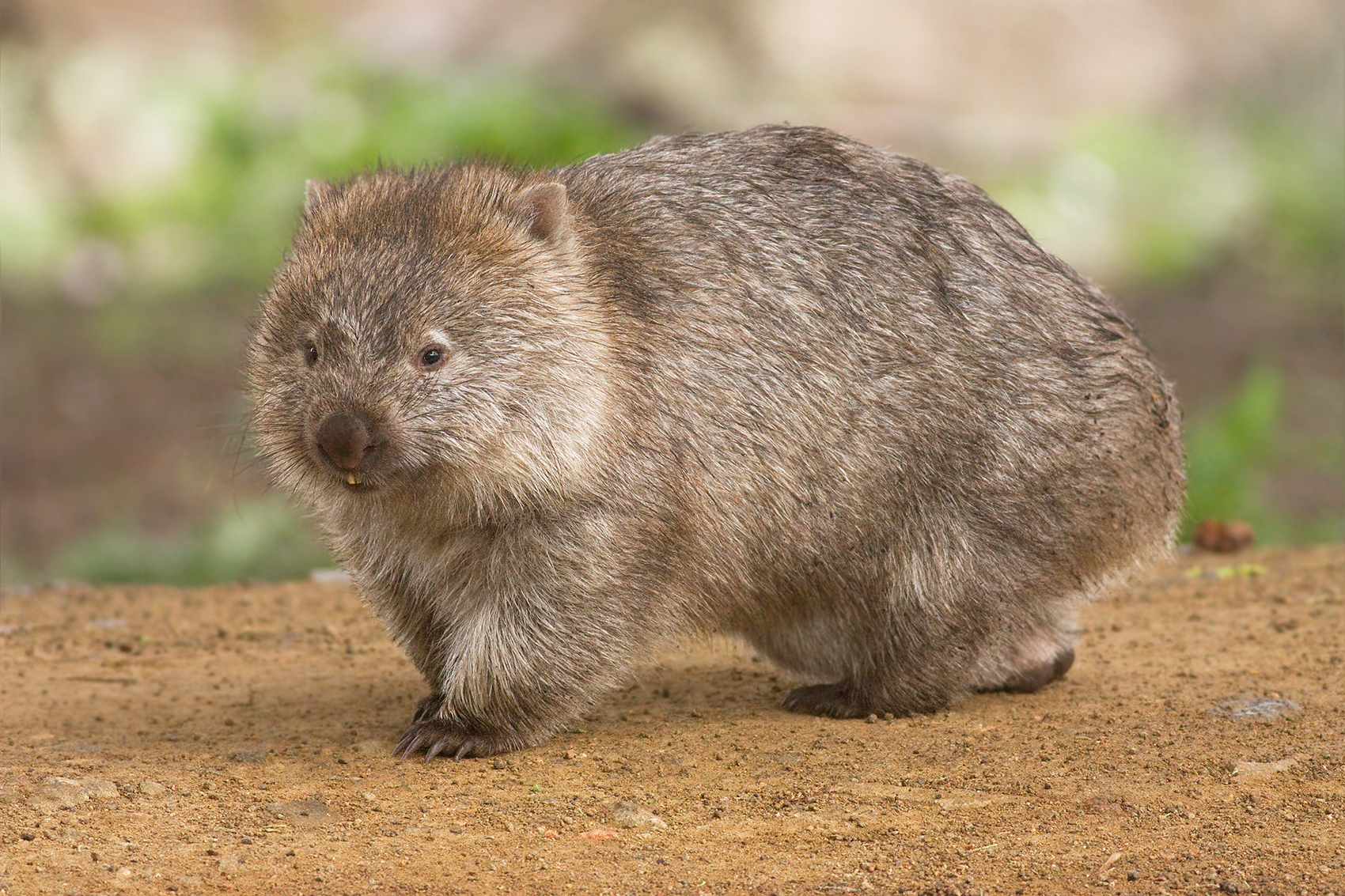
Wombat. Image credit: JJ Harrison, Creative Commons
The key conservation actions for the next decade are to: 1) maintain effective feral and introduced animals control programs, especially around the fragile habitats of several of alpine zones endangered species, such as the Corroboree frog; 2) restrict tourism in the alpine zone further to reduce damage to fragile vegetation; and 3) ensure cooler, wetter microrefugia, such as bogs and rocky features, are identified and well-maintained at higher elevations to help vulnerable species adapt to climate change.
Citations
- Good RB. 1995. Australian Alps. Pages 458-461 in S.D Davis, VH Heywood, A.C.Hamilton (editors) Centres of Plant Diversity. Volume 2. Asia, Australasia, and the Pacific. WWF/IUCN, IUCN Publications Unit, Cambridge, UK.
- Slattery D. 1998. The Australian Alps: Kosciuszko, Alpine, and Namadgi National Parks. University of New South Wales Press, Sydney, Australia.
- Williams, R. J. and A. B. Costin. 1994. Alpine and subalpine vegetation. Pages 467 – 500 in R. H. Groves, editor. Australian Vegetation. 2nd edition. Cambridge University Press, Cambridge, United Kingdom.
